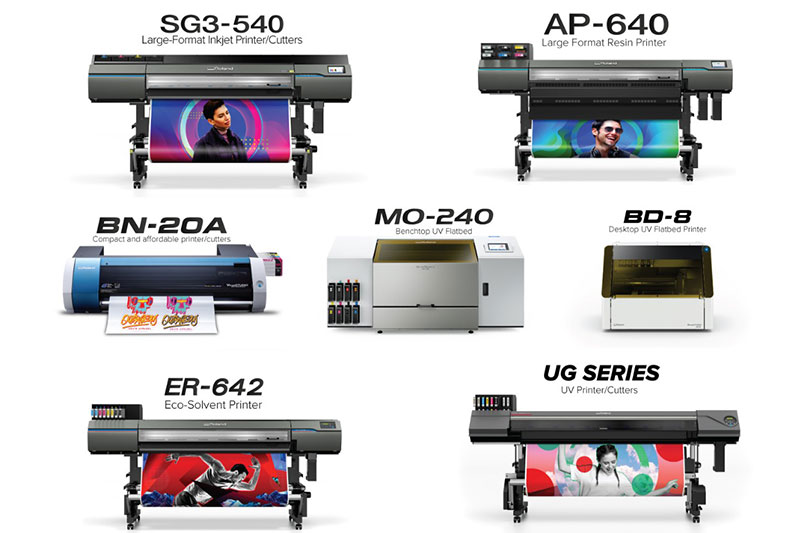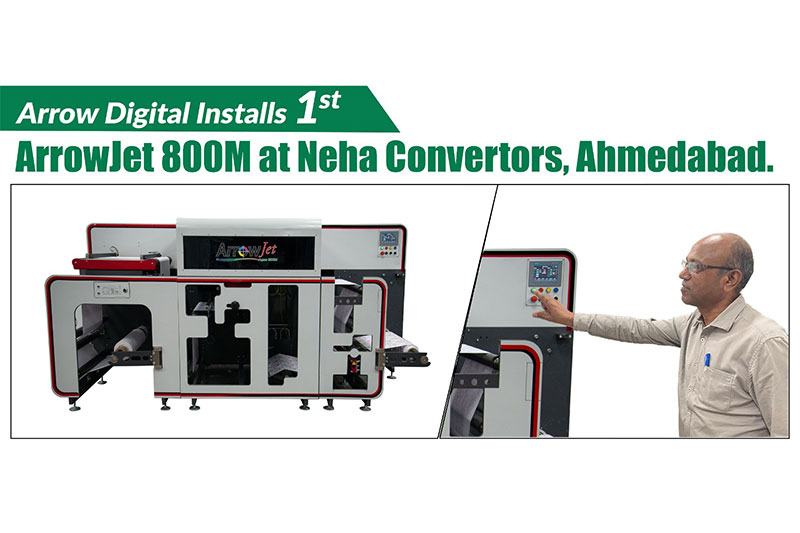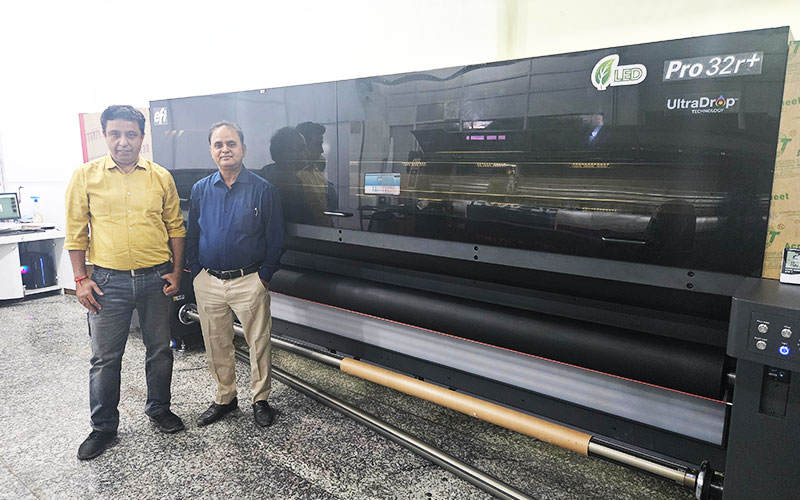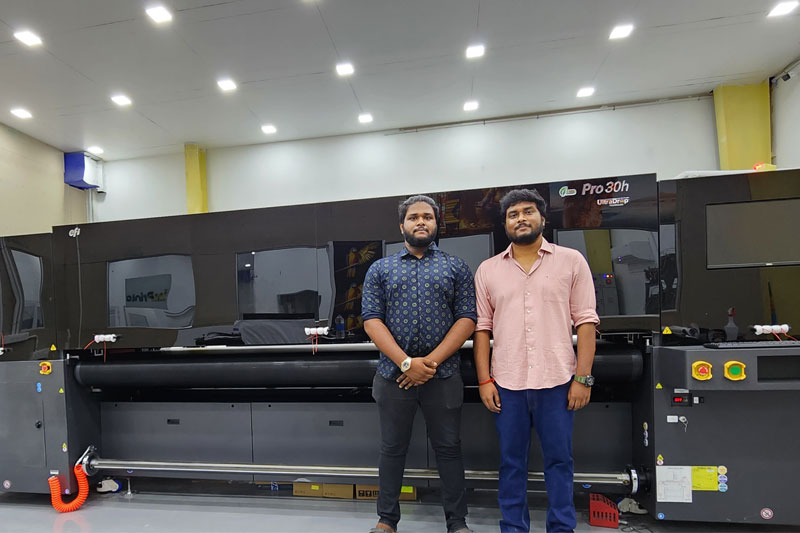1. What is the core innovation behind HP’s latest printer launch?
HP’s newest all-in-one printer is built on our fourth-generation latex inks, which are widely regarded as the most sustainable inks on the market. These inks are certified with EcoLogo and GREENGUARD standards. Additionally, we’ve replaced plastic ink cartridges with recyclable cardboard versions, and the printer itself is built using 25–30% recycled plastic components.
Beyond just materials, HP also runs the Planet Partners Program, allowing users to return and responsibly recycle used cartridges and printers. We’ve woven sustainability into every level of this product.
2. How does this printer push the boundaries of functionality?
This isn’t just a printer-it’s a full-fledged production tool. The compact, all-in-one design helps reduce operational space, labour costs, and setup complexities. What makes it stand out is the ability to switch between roll-to-roll and rigid printing in under two minutes, giving PSPS (Print Service Providers) complete flexibility without investing in multiple machines or setups.
3. Why is this transition capability important for PSPS?
Traditionally, PSPS had to maintain separate setups or outsource rigid printing altogether. That meant inconsistent quality and slower turnaround times. With this printer, a PSP can deliver high-quality results across multiple media-foam boards, brushed aluminium, tapestry, blinds, wood, and even transparent film with white ink, all using a single platform.
This enhances operational efficiency and helps PSPS expand its service offerings under one roof.
4. What are some of the most in-demand applications that this printer supports?
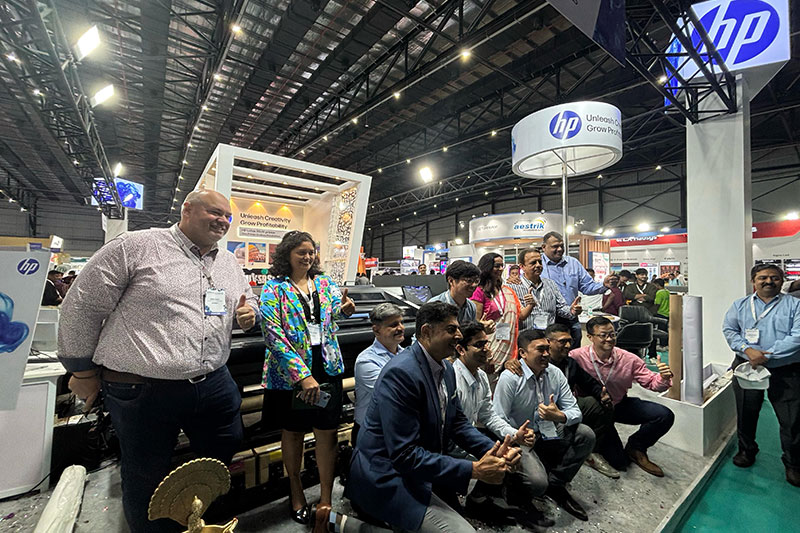
The versatility is remarkable. Some of the most in-demand and high-growth applications include:
- Acoustic panels for commercial offices and theatres
- Double-sided and three-layer signage
- Wallpaper and wall décor for residential and commercial interiors
- Reflective road signage is made possible with our water-based latex inks.
- Window blinds and custom décor for matching interiors
The rise in home improvement post-COVID has made applications like wallpaper and upholstery printing a booming market segment, especially in India.
5. Can you elaborate on how HP’s software ecosystem supports print businesses?
Many small and mid-sized PSPS still rely on manual processes- paper orders, verbal instructions, and delayed job tracking. We’ve developed a software ecosystem that digitises the entire production workflow. With it, PSPS can:
- Track orders in real-time
- Reprioritise print jobs on the fly.
- Eliminate miscommunication
- View the production status from desktops or mobile phones.
This game-changer is for MSMES, allowing them to scale operations with greater control and professionalism.
6. Is this printer about faster output, or something more transformative?
It’s both. Technically, it introduces faster turnaround by enabling continuous media loading and hot-loading- you can load the next sheet while the current one is still printing. This eliminates the typical downtime associated with manual loading and taping, which eats up around 40% of production time in conventional systems.
Strategically, it’s a shift in how PSPS thinks about production. It combines compactness and power without compromising speed, versatility, or sustainability.
7. Why was India chosen as the launchpad for this global innovation?
India is a significant and dynamic market for HP. It’s the fifth-largest economy globally and is on track to become the third. With over 60% of the population under the age of 29, there’s tremendous growth in infrastructure and consumer demand.
From retail outlets, malls, and roadways to airports, bus terminals, and railway stations, India’s infrastructure-led growth offers unparalleled opportunities for the signage and print industry. At the same time, increased disposable income is fueling the rise of personalised décor. This printer is designed to tap into both.
8. How is HP supporting PSPS in adopting this new technology?
We’re focused on training, education, and ease of adoption. Through our partners, we offer setup guidance and hands-on training. Additionally, we’re setting up demo centres where PSPS can see the printer in action before purchasing.
We aim to empower print businesses to transition smoothly, understand the technology deeply, and fully unlock its potential.
9. What is your final message to the 20,000+ industry professionals reading this, especially the print entrepreneurs, floor managers, and signage pioneers?
Watch the market closely. The next wave of growth will be driven by infrastructure expansion and décor innovation. But what will truly differentiate you is your ability to offer sustainable solutions.
More clients will start asking: Are your prints eco-friendly? What happens to waste? Are you reducing your footprint?
PSPs who prepare now for scale and responsibility will lead tomorrow. And HP is proud to be your partner in that journey.







